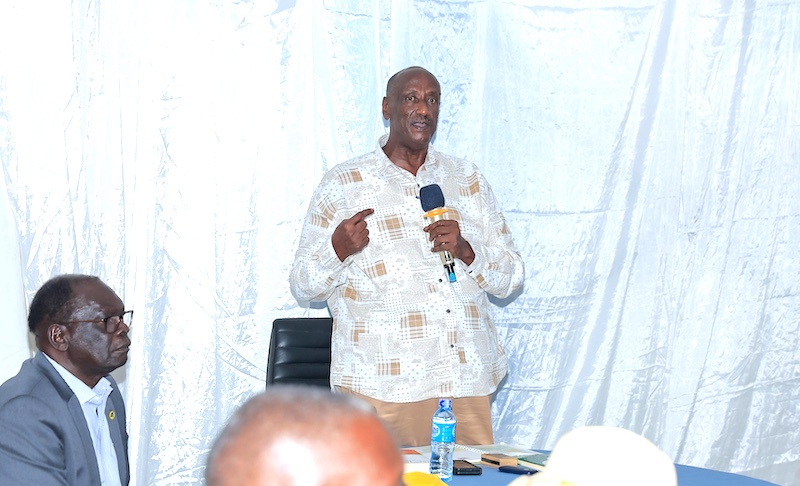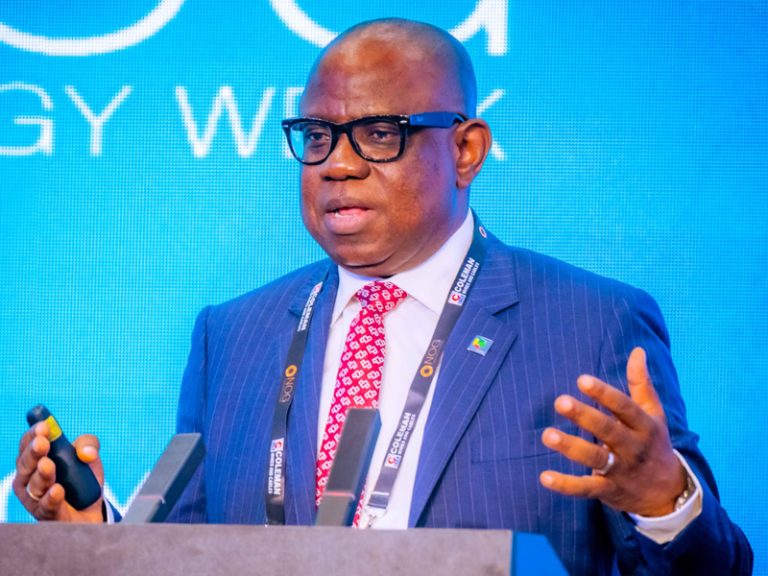
At sunrise, the hum of machinery rises over Kapeeka’s hills in Nakaseke district.
Trucks loaded with cement, clay and pineapples move down dusty roads toward a sprawl of warehouses and steel-roofed factories. The once-sleepy trading center is now alive with the rhythm of Uganda’s industrial awakening, a quiet revolution of production, pride and persistence.
Last Friday, top business leaders under the Presidential CEO Forum (PCF) gathered here, not for speeches or policy briefs, but to see Uganda’s industrial transformation for themselves.
Led by PCF president Irene Birungi Mugisha, the group of CEOs, policymakers and investors walked through the Liaoshen Industrial Park, peering into assembly lines and speaking to workers whose stories capture the country’s ambitions better than any strategy paper could.
Their first stop was Goodwill Uganda Ltd, a tile-manufacturing giant that has quietly become one of the country’s symbols of industrial progress. Inside its cavernous production hall, conveyor belts roar and shimmer with ceramic dust. Forklifts whiz past neatly stacked pallets as workers in blue uniforms operate digital control panels.
“The factory employs 1,150 Ugandans and 60 Chinese technicians,” said David Mawejje, Goodwill’s administrative manager, his voice nearly drowned by the din of machinery. “Over 90 per cent of our raw materials are sourced locally.” He paused, then said.
“We don’t just make tiles here. We make jobs. We make skills.”
Goodwill’s story is not an isolated one. Many of the products leaving Kapeeka, tiles, sanitary ware, packaging materials, even dried pineapple snacks, are now sold across East Africa, a feat that still surprises many visiting executives.
Barely two decades ago, Kapeeka was known for its smallholder farms and potholed roads. Today, the Liaoshen Industrial Park hosts more than 38 operational factories producing steel, ceramics, fruit juice and fertilizers.

According to Gen Salim Saleh Akandwanaho, the senior presidential advisor on Defence and chief coordinator of Operation Wealth Creation, this shift was no accident. It was the product of deliberate planning, infrastructure investment and a mindset change.
“I once believed I was rich from maize farming,” Saleh told the visiting CEOs. “But reading How Europe Underdeveloped Africa challenged me to think bigger.”
That revelation, he said, led him to champion production-based wealth creation, anchored on manufacturing, technology and land reform.
“Once someone has a title on even one acre, they start building permanent homes,” he explained. “That’s how transformation begins.”
For Irene Birungi Mugisha, the CEO Forum’s leader, the visit wasn’t just a tourist attraction, but a bridge.
“The Presidential CEO Forum is an initiative of His Excellency the President,” she said. “It creates engagement platforms between business leaders, government and key stakeholders. We want CEOs to see what’s happening on the ground, not just in policy documents.”
Mugisha, one of Uganda’s most influential business voices, said such visits strengthen trust between the state and private sector. “When CEOs see factories like these, they stop being critics and start becoming partners,” she said.
She added that the media, too, play a crucial role.
“They shape how Ugandans see industrialization, not as abstract policy, but as a lived, local success story.” One of the visitors, Emmanuel Katongole, the chairman of Quality Chemical Industries, was visibly moved. “Uganda is clearly on the path to industrialization,” he said.
“Why should we import toilet pans or plates when they’re being made here? Every business leader should visit these parks. You can feel the opportunity in the air.”
Katongole’s sentiment echoed through the group, a mix of excitement and introspection. For years, many in the private sector viewed industrialization as government rhetoric. In Kapeeka, they saw it taking shape, brick by brick.
THE NUMBERS BEHIND THE VISION
Since its inception, the Liaoshen Industrial Park has attracted over $600 million in investment and created thousands of jobs. The park sources more than 90 per cent of its raw materials locally, stimulating industries in mining, logistics and agriculture.
Factories here now export to Kenya, Rwanda and the Democratic Republic of the Congo, demonstrating that Ugandan-made products can compete regionally. Training programs within the park have turned rural youth into skilled technicians—a quiet but powerful transformation.
“Every machine operator you see here started with zero experience,” Mawejje said. “They were trained here from scratch. That’s what real capacity-building looks like.”
Yet even amid optimism, challenges remain. CEOs cited high electricity costs, limited access to affordable loans, and bureaucratic red tape as persistent bottlenecks. Gen. Saleh acknowledged these concerns.
“We need financing models that favour manufacturers and processors,” he said. “Without affordable credit, we can’t scale this progress.”
Land ownership remains another hurdle, with many potential investors discouraged by slow titling processes. Still, industrial parks like Liaoshen offer a model where investment and community benefit can coexist.
Kapeeka is more than an industrial park; it’s a metaphor for Uganda’s evolving identity. The country is slowly shifting from an import-dependent economy to one that makes, builds, and exports.
“This is not about charity,” Saleh said. “It’s about production. True wealth comes from what you create, not what you consume.”



